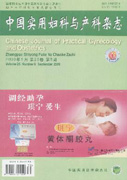Female genital tract malformations are a large group of congenital structural abnormalities that involve the uterus,cervix,vagina and fallopian tubes,and are often combined with organs other than the reproductive tract.Due to the close relationship between embryonic development of Mullerian duct and mesonephric or Wolffian duct as well as the urinary system,renal malformations are the most common malformations.Classification of different malformations at present mainly depends on the structure characteristics and clinical manifestations,considering the embryonic basis at the same time.The most representative classifications include the American Fertility Society(AFS)classification(1988),VCUAM classification(2005)and the European Society of Human Reproduction and Embryology and European Association for Gynecological Endoscopy(ESHRE/ESGE)classification(2013).This paper is to review and comment the characteristics,advantages and limitations of each classification system.

